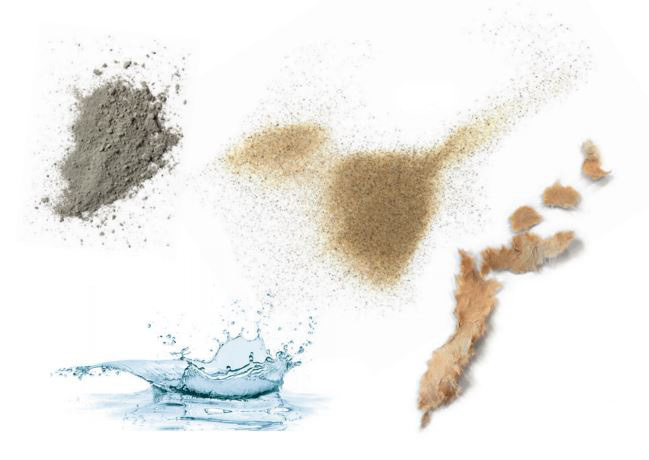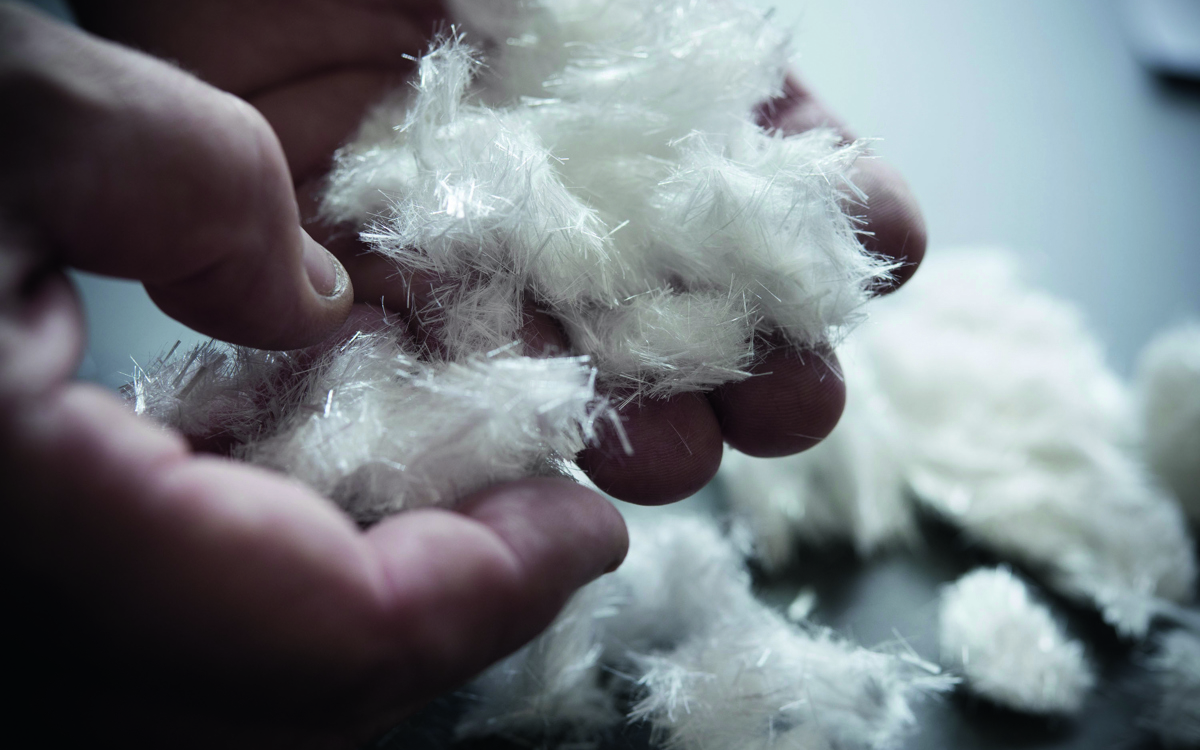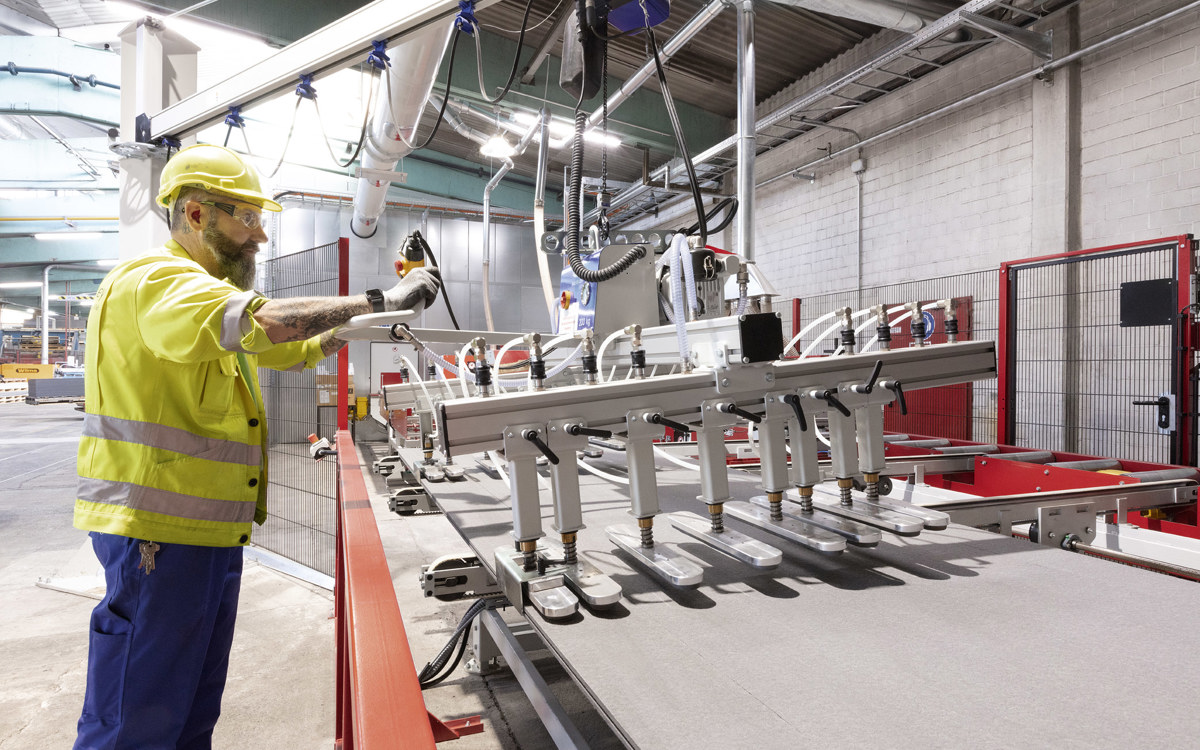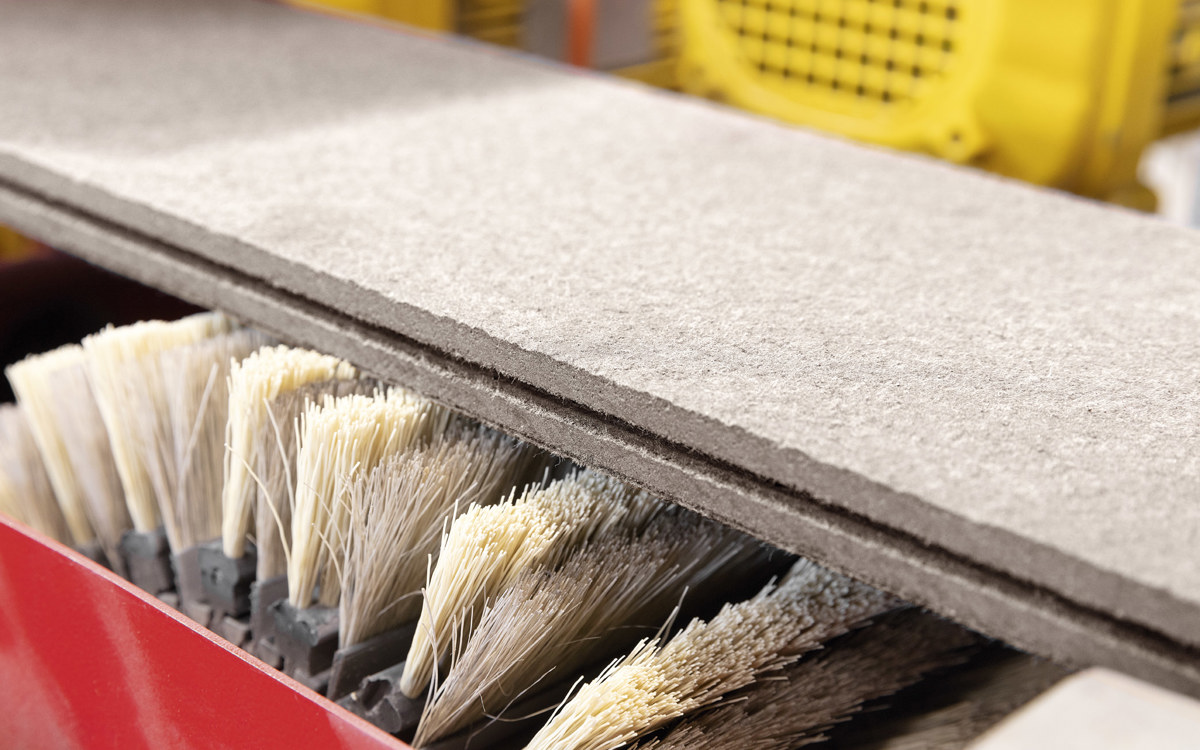The Cedral Terrace flooring is made of fibre cement. This is an extremely robust material that combines the hardness of stone with the flexibility of wood. It easily withstands the test of time and requires very little maintenance, making it a convenient choice for your terrace. Discover what makes fibre cement so durable and sustainable.

A powerful combination of 5 raw materials
Fibre cement is made of a cleverly engineered mix of five raw materials that are commonly available and low in toxicity.
- 39% cement as the main binding agent
- 16% fibres for extra strength
- 11% additives to optimise properties
- 18% air for breathability
- 16% water to set the cement As the name indicates, fibre cement is a composite material consisting of cement with fibres. The main raw material in the Cedral Terrace flooring planks is cement (38%). This is the binding agent that glues and shapes the raw materials into durable planks for your terrace. Cement hardens in the air when water is mixed in. The raw materials used to produce cement are limestone and clayey rock. These rocks are broken and finely ground. The limestone and clay powder is mixed together in a 3 to 1 composition. By burning this raw mixture, the lime is bound to the clay, which allows it to harden in any desired form by mixing it with 3% gypsum and sufficient water.

The secret ingredients in fibre cement
Cement alone would be too brittle without reinforcement. Therefore, synthetic, organic fibres made of polyvinyl alcohol are added to the cement. The so-called reinforcement fibres make up approximately 2.5% of the mixture. These technically optimised fibres bring mechanical strength to the Cedral Terrace flooring planks. There is a second type of fibres used to produce your terrace planks. Cellulose fibres are used to increase the adhesive strength between the reinforcement fibres and the cement. As they make up 13% of the final product, these process fibres also contribute to the light weight of fibre cement to reach similar properties as heavy stone. To make sure your terrace flooring lasts you a lifetime, we add limestone powder or already hardened and ground fibre cement to the mix. These are obtained from recycling processes, so that we reduce the waste of our production process. The additives optimise the product properties so that you can enjoy the perfect terrace.

Made with water and air
A large proportion of the fibre-cement mix is air (18%) and water (16%). And they are just as important as the other ingredients. The air doesn’t only allow the cement to harden, it also creates microscopic pores in the end product. This means that your flooring can absorb moisture (up to one third of its weight), helping to keep your terrace dry, but the planks can also ‘breathe’ what is beneficial for the ground underneath. Last but not least, water is required (16% of the mixture) as an auxiliary for the production process in order to generate a homogeneous mass and to set the cement. Most of this water has disappeared from the final product, but the small quantities that remain in the material in its hardened state further hydrate the cement stone throughout the life of the product, keeping your terrace in good shape.

How is fibre cement produced?
Now you know what’s in it, you also want to know how these ingredients are composed into beautiful and durable Cedral Terrace planks. Here is the recipe. All raw materials are mixed together and then filled into the so-called ‘Hatschek machine’. Ludwig Hatschek was the Austrian engineer who invented the reinforced cement-products in the late 19th century. The fibre-cement mass runs through a rotating cylinder onto a conveyor belt and is wound onto a format roller. When the desired thickness, length and width are reached, the shaped fibre cement is cut off. The resulting board is still damp and soft. Next, it is pressed, stacked and dried until the cement has fully set. After about three weeks, the fibre cement board is completely dry. Then your Cedral Terrace planks are cut to the appropriate width and their surface is machined. This is how we create the velvety feel of Cedral Terrace.
Share your #mycedralworld
project with the world